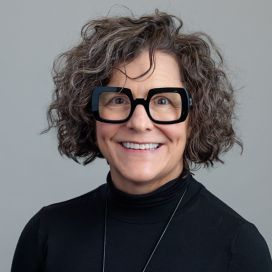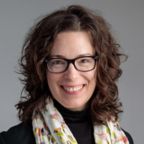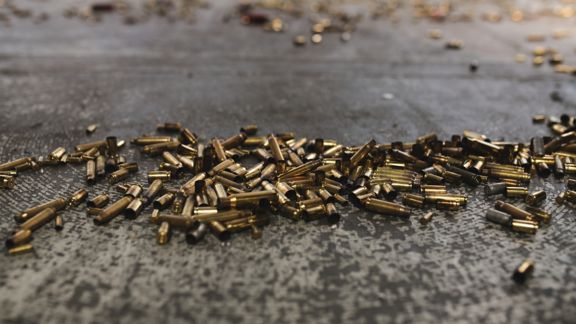How Right Now / Qué Hacer Ahora

Problem
COVID-19 is not just a danger to one’s body; it can be a threat to one’s mind.
Anxiety, fear, and sadness are just some of the myriad emotions millions are feeling as a result of the pandemic’s affect on those we love, on our communities, on our nation, and on ourselves.
Recognizing the mental health burden and potential behavioral impact that countless Americans face—as a result of unemployment, the loss of loved ones, the isolation that comes with social distancing, and the possibility of contracting the virus—public health experts at the Centers for Disease Control and Prevention (CDC) and the CDC Foundation turned to NORC. They tasked us with developing a communication campaign as well as new coping tools to help those in need.
Solution
NORC helped curate and promote targeted mental health resources from trusted sources.
With technical guidance from CDC, and funding from the CDC Foundation, NORC partnered with Burness Communications, Inc. and The Media Network (TMN Corp)—to help us create How Right Now/Qué Hacer Ahora (HRN/QHA). HRN/QHA drives audiences to a website of existing and newly developed evidence-based, feeling- and situation-specific bilingual resources. These incuded fact sheets, articles, webinars, mobile apps, videos, and crisis hotlines. While these coping tools are available to everyone, the campaign focused on reaching
- People with preexisting mental and physical health conditions
- People experiencing violence
- People in economic distress
- Adults 65+ years old and their caregivers
Because time was of the essence, our multidisciplinary team conducted rapid formative research that was both quantitative and qualitative. Our approach included an environmental scan, social listening, online focus groups with priority audiences, partner needs assessments, and surveys of more than 1,000 people using NORC’s renowned nationally representative and scientifically rigorous AmeriSpeak® panel. Our findings underlined the importance of
- Validating people's experiences and acknowledging the severity of their situations
- Sharing actionable content that doesn’t create additional barriers
- Being culturally responsive
We used this information to develop a brand and culturally appropriate targeted messaging and materials, including several award-winning videos of real people talking about their emotional responses to the pandemic.
For maximum speed, insight, and effectiveness, our team partnered with and listened to the trusted voices of influential local, regional, and national organizations. More than 83 organizational partners—including the notables below—lent their expertise and actively disseminated products and resources to their communities.
To drive people to the website, we used a mix of social media posts; radio advertisements; television advertisements in provider waiting rooms; virtual meetings, conferences, and town halls; and texting programs. We also tapped 44 celebrities and 61 influencers to push out our messages.
Result
How Right Now/Qué Hacer Ahora increased awareness and resilience.
In its first three months alone, the campaign had more than 42,000 website visits, 320,000 video views, and 25,000 social media engagements. In addition, the campaign doubled the number of partner organizations, significantly expanding its reach.
An evaluation conducted August 2020–May 2021 revealed that HRN/QHC obtained a potential audience reach of more than 437 million and had the greatest impact on those who needed help the most–people experiencing violence, economic distress, and communities of color. In particular, Black and Hispanic groups initially reported higher levels of stress and were more likely to seek information about how to cope with emotional distress. After being exposed to campaign messages and materials, they were also the most likely to report positive community engagement and increased resilience. These findings are a win for us all and speak to this campaign model's promise for helping people in future health emergencies.
As of December 2020, HRN/QHC had been presented at seven national and international health conferences and 19 other meetings, was written about in 11 mini- and full-length reports and five professional journals, and was profiled in a dozen media placements.
Learn More About the Study
Interested in discovering how you can benefit from a similar communication campaign?
Contact Dr. Amelia Burke-Garcia, NORC’s Director of Digital Strategy & Outreach:
Related Tags
Project Leads
-
Amelia Burke-Garcia
DirectorProject Director -
Dani Heide
Senior Research DirectorProject Manager -
Sherry Emery
DirectorSenior Staff -
Jennifer Berktold
Principal Research ScientistSenior Staff
HRN/QHA Project Partners
- Addiction Policy Forum
- Alzheimer’s Association
- American Cancer Society
- American Red Cross
- Asociación de Salud Primaria de Puerto Rico, Inc.
- Faces & Voices of Recovery
- Futures Without Violence
- League of United Latin American Citizens
- Mental Health America
- National Alliance on Mental Illness
- National Association for the Advancement of Colored People
- National Latino Behavioral Health Association
- United States Hispanic Chamber of Commerce














